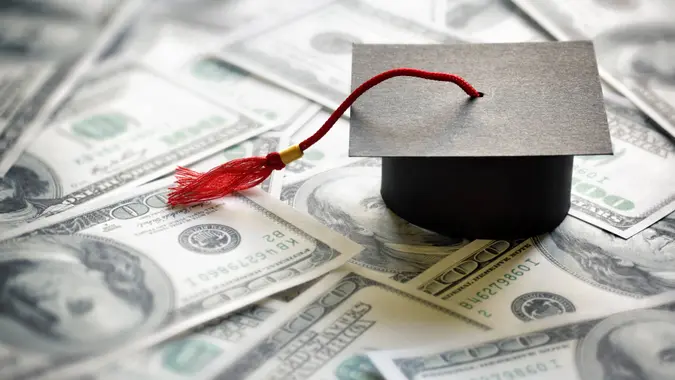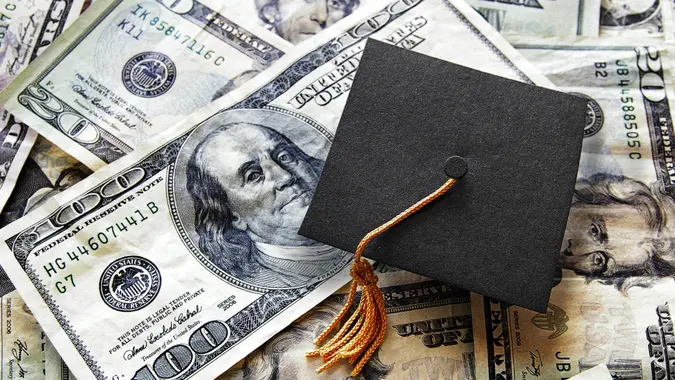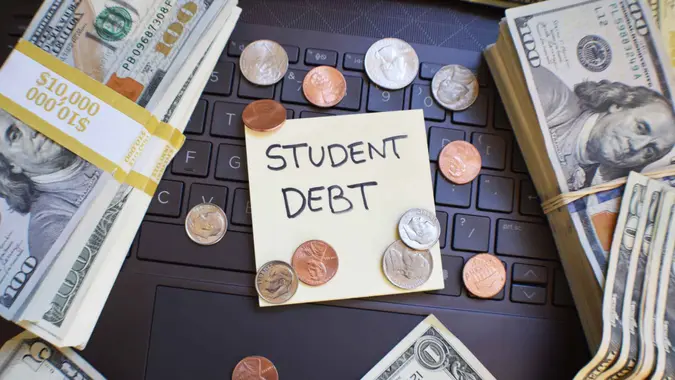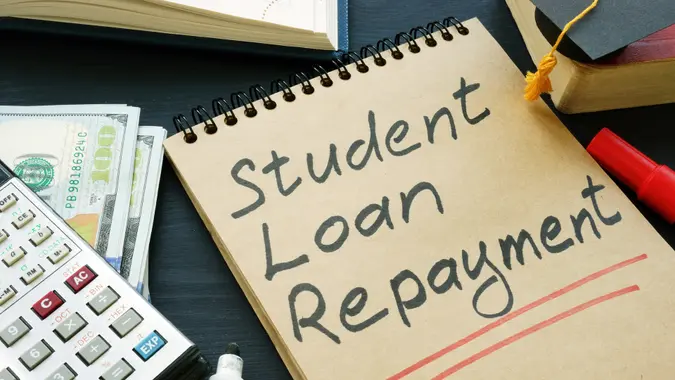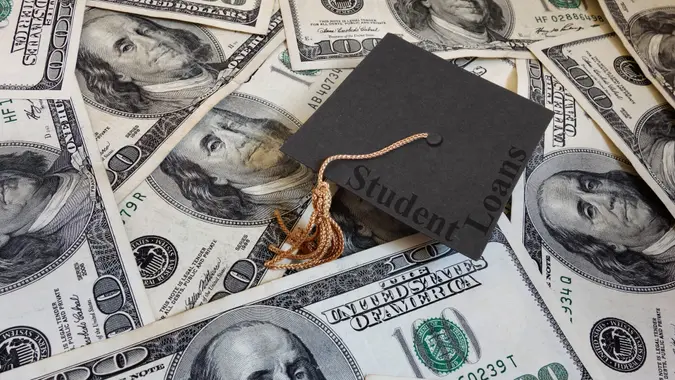Student Loan Debt Becomes Second-Largest Consumer Debt Category Behind Mortgages

Commitment to Our Readers
GOBankingRates' editorial team is committed to bringing you unbiased reviews and information. We use data-driven methodologies to evaluate financial products and services - our reviews and ratings are not influenced by advertisers. You can read more about our editorial guidelines and our products and services review methodology.

20 Years
Helping You Live Richer

Reviewed
by Experts

Trusted by
Millions of Readers
In the first quarter of 2022, student loan debt reached an all-time high of $1.59 trillion, according to the Federal Reserve Bank of New York and as reported by CNBC. Student loan debt accounts for 10% of total household debt, making it the second-largest category of consumer debt behind mortgages.
Throughout the pandemic, private student loans continued to build interest and required borrowers to make monthly payments. CNBC noted that this may partially explain the increase in total debt, in addition to new loans for current and new students.
Federal student loan payment forbearance has been extended until Aug. 31, and CNBC reports rumors that the Biden administration is considering $10,000 in federal student debt forgiveness per borrower. Democrats are pushing to increase that number to $50,000 for each borrower making under $125,000 per year, says CNN.
Although the Biden administration has already canceled more than $17 billion of the $1.6 trillion in outstanding federal student debt, these actions fall short of the campaign promise to more broadly cancel student debt.
According to a January CNBC + Acorns survey, 81% of people with student loans say that student loan payments have forced them to delay key life milestones. Federal data also shows that total student debt has increased by nearly 10% since the third quarter of 2018, CNBC added.
Matthew Chingos, vice president of education data and policy at the Urban Institute, explained to CNN that canceling $10,000 for households earning less than $125,000 a year would result in forgiving a total of $277 billion in student loan debt. About 16% of that relief would go to households earning less than $25,000 a year.
More From GOBankingRates
- Nearly 1 in 3 Americans Hit by a Costly Holiday Scam, Norton Survey Shows -- How To Avoid This
- Here's What the Average Social Security Payment Will Be in Winter 2025
- How Middle-Class Earners Are Quietly Becoming Millionaires -- and How You Can, Too
- The Easiest Way to Score $250 for Things You Already Do
 Written by
Written by  Edited by
Edited by 



